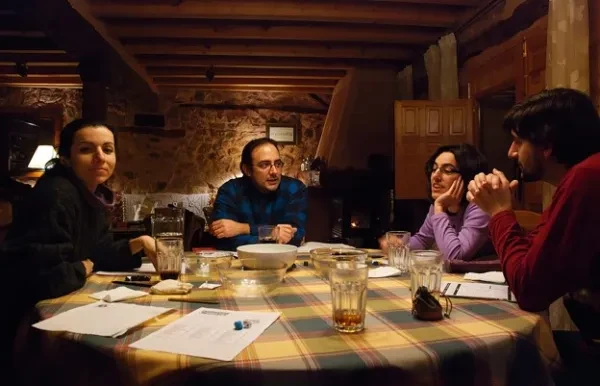
People come to Dungeons and Dragons for a multitude of reasons. Whether that’s storytelling, the combat, or worldbuilding, there’s a little something for everyone to enjoy. But having this catch-all approach means that it has to average out all these factors to make them mix well with one another.
This leaves room for other games to swoop in and specialize in a mechanic to fully capture that specific experience. So, without further ado, here are our top 10 board games like Dungeons and Dragons–but better in their own way:
10. Honey Heist
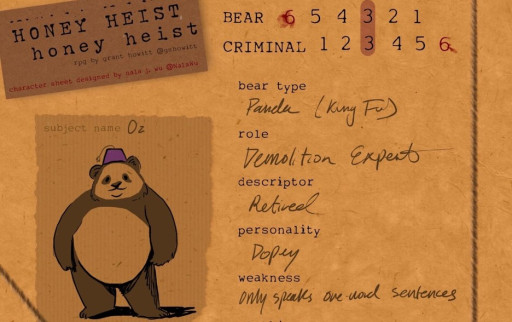
Execute the perfect heist with your bear hands!
Okay, hear us out: Oceans Eleven but with bears. It may seem silly, but Honey Heist has you play as one of several bear species attempting the greatest heist of all time. The elegance comes with the game’s accessibility. Where traditional D&D has you read tomes of text, Honey Heist’s ruleset is written on a single page–with pictures!
Prep time is also surprisingly easy. With the random tables in the rulebook, you can generate a high-stakes heist with just a couple of dice rolls. These predetermined adventures offer plenty of room to play the game’s class system, whether you’re the brawn-headed Muscle or the sly-handed Thief among many others.
If you just want to dip your toes in tabletop gaming, Honey Heist is a perfect entry point. The simplicity of its system means that just about anyone can join in, all while delivering the crazy, fun shenanigans expected from the genre and a few unlucky rolls.
Choose this game if you like:
- Comedic campaigns: Well, you’re a bear doing criminal things–kind of difficult to create something less hilarious. There will be serious moments but for the most part, Honey Heist is a game where humor takes the front seat.
- Quick and easy-to-run setup: With its one-page rule, Honey Heist gets you to the action immediately. Even character creation is done in just three rolls–and an optional fourth to give your bear a cool hat.
- Planning and execution: Heist is in the name after all. With great riches (or honey) hanging in the balance, you’ll need all your wits to prepare, plan, and execute your actions for that sweet, sweet treasure.
9. Microscope by Ben Robbins
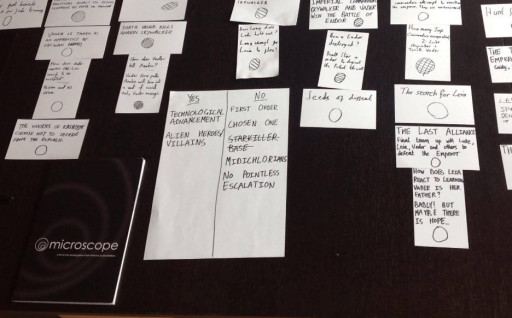
Create new worlds in this collaborative storytelling game.
Microscope by Ben Robbins is not your typical board game. It covers a specific niche, namely: worldbuilding. In a group of 1-4 players, you plot an entire world’s timeline, from its very conception to, if all players are willing, its end.
Mechanically speaking, Microscope is all about narrative play. There’s no combat save for events that you include like wars. Even then, these are narrated rather than played out. Over the course of the session, your group will take turns adding events that shaped the world. One of you may add a bloodthirsty king; another can explore what made him a hateful ruler. This pass-and-play mechanic is the core gameplay and extends from the smallest units to the rise and fall of kingdoms.
Often, worldbuilding is an underappreciated aspect of D&D save for lore lovers and Dungeon Masters. If you’re the type of player that enjoys discovery or creating history, Microscope is developed exactly for this whether played solo or in a group. The best part is the game doubles as an exercise for storytelling, and you can carry your worlds over to future campaigns.
Choose this game if you like:
- The worldbuilding process: The bread and butter of the game: its focus on worldbuilding. If you like creating cultural backgrounds, societies, and overall history, the game works as a tool to aid you in your process. In fact, it can even be used on existing stories to see how it would have changed if you add in other events.
- Having a session zero: Session zeroes are sessions where your group builds expectations and ground rules. Microscope is perfect in that you can establish a world with the rest of your party, keeping everyone on the same page in atmosphere, tone, and bits of history.
- Collaborative storytelling: While Microscope can be played solo, it’s designed with collaboration in mind. That means you’ll have to share the spotlight and accept that you won’t have full control over your world. This is great if you want to add an element of randomness to your worldbuilding process or just enjoy sharing stories with others.
8. Fiasco
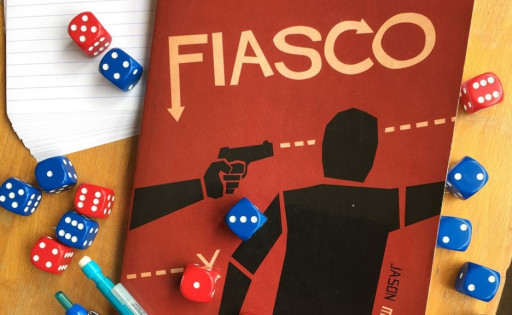
Rival dice rolls with your own wit and improv skills!
Being a Dungeon Master is hard–finding a good one is even harder. Fortunately, Fiasco’s game of capers doesn’t require one. All you need are four six-sided dice, some pen and paper, and a couple of friends in for some good hijinks.
Fiasco puts you in the shoes of masterminds, describing character actions as though it has been planned for weeks. But don’t get too comfortable–fail a dice roll and the game makes the plan go off the rails. This makes Fiasco the ultimate playground for improv and roleplayers, having to rival bad rolls with their own wit and on-the-fly thinking.
The movie-like structure of the game makes it work in all kinds of genres. Whether that’s chase-filled escapades or space-faring adventures or maybe even a star-crossed romance–just ask what your table is in the mood for and prepare for something chaotically fun and original.
Choose this game if you like:
- Rolling with failure: No, seriously. The game encourages you to embrace mistakes, whether that’s from an unlucky roll or a poorly planned action. It follows up with more than enough opportunities to turn that failure into success–which is also a great lesson in real life. You only ever lose once you stop trying.
- DM-less gameplay: Whether because you don’t have one or because your table prefers the chaos of an unhindered player group, Fiasco is designed to be played without a DM. Instead, it will rely on the players bouncing off one another to build the campaign from the ground up.
- Improv and storytelling: Because you’ll be playing out moves as though they’re pre-planned, Fiasco is a great teacher of setup and payoff. This brings out the storyteller in you, where actions you did five scenes ago suddenly show their results later for a surprising twist.
- Hassle-free setup: Gone are the game nights where an hour is spent setting up the game pieces. In Fiasco, just get a pen, paper, and a couple of six-sided dice and you’re ready to roll.
7. Index Card RPG
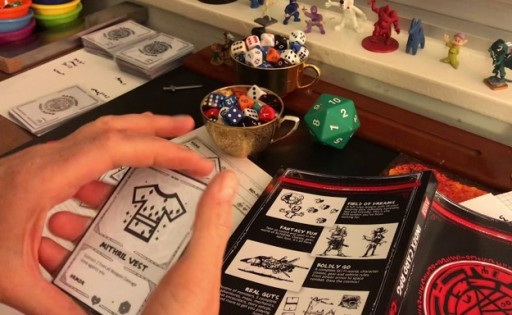
A D&D experience without all the reading.
Based on a similar brand of sword meets sorcery, Index Card RPG offers a tabletop experience familiar to Dungeons and Dragons players. This time, however, everything is condensed to bite-sized information from worldbuilding to character creation to battles.
The goal is to get you doing cool mechanics as quickly as possible. Number crunching is exchanged in favor of consistent dice rolls. This extends to the gameplay as well, with optional turn-based timers escalating encounters to keep players on the edge of their seats. Survive and you get better loot. This cycle of fear and reward hits all the spots to keep you wanting more.
Index Card RPG, with its focus on lightweight rules and empowering players, is all the best parts of D&D in accessible form. Plus, it breaks through genre barriers, with the Master Edition adding scifi, superhero, and vigilante settings all playable with the same system.
Choose this game if you like:
- Straightforward mechanics: Unlike other heavy roleplaying board games, Index Card RPG foregoes number crunching for simplicity. Here, there’s not much statistics–no confusion about what damage a +1 Greatsword deals, certain attacks, movement, and actions always roll the same-sided die.
- A one size fits all system: The bane of other tabletop games is adopting their systems into a different genre. Most of the time, because of rigid mechanics, they only fit in the world designed for them. Not with Index Card RPG! The core gameplay is open enough that you can design campaigns in a plethora of genres or try the ones included in the game.
- Consistent application of pressure: In a fun way, of course. The game extends stat rolls beyond combat and not in a pass or fail system like D&D. Imagine: you’re trapped in a collapsing cavern, rubble blocking the way out. You don’t just make a strength check and remove the rubble if you roll higher than 10. No, you roll 1d4 and chip away at the blockage. Then another d4. Then another, hoping to deplete the rubble’s “life points” before the walls come crashing on you in three more turns.
6. Cyberpunk: Red
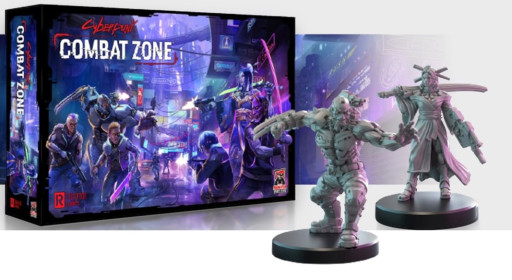
Take your adventures to a cyberpunk-themed future.
With the release of Cyberpunk: 2077, the cyberpunk genre has had a resurgence. But before the videogame was the tabletop series it drew inspiration from. In Cyberpunk: Red, the fourth and latest edition of the franchise, we shift away from fantasy to sprawling mega-corporations, neon lights, and cybernetic implants.
The game encourages characters with big personalities, driven by their personal–but not necessarily selfish–desires. To do that, they’ll have to partner with suspicious factions, taking on dangerous jobs, and augmenting themselves with more powerful implants. Be careful, though, endure too much trauma and you’ll be afflicted with the dreaded cyberpsychosis.
Cyberpunk: Red is packed with all the freedom and mechanics you wish the videogame has. Though initially overwhelming with the sheer amount of skills and rules to learn, the game rewards commitment with an engaging world full of captivating stories, gritty gameplay, and a reflection of social commentary. One that might even make you question what makes us human.
Choose this game if you like:
- The cyberpunk genre: If you haven’t been clued in by the title, it’s set in a cyberpunk setting. This substitutes traditional fantasy tropes with science fiction. It’s a great change of pace for exploring other genres or if you just really prefer sci-fi.
- Treading the limits of humanity: What makes us human? Many board games have touched on philosophical ponderings before but Cyberpunk: Red takes it to the next level. As a core mechanic, you strengthen your characters through cybernetic implants. Take it too far and you’re afflicted with cyberpsychosis. This integration is what forces the player to think whether more power is worth their humanity.
- History-rich worlds: As you travel through Night City, you’ll brush on lore that hints to how society changed over time. From a nuclear holocaust that painted the skies red for decades to familiar faces like Johnny Silverhand, you’ll get a feel for a world larger than you ever thought it was–and still growing.
5. Gloomhaven
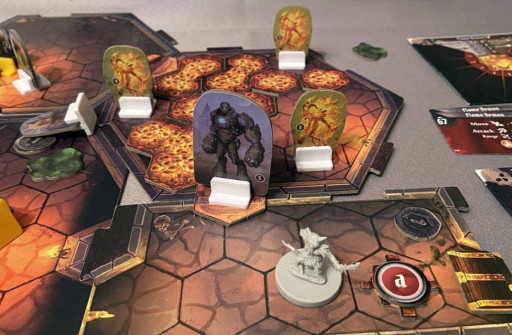
Kill, loot, and repeat in this dungeon-crawling board game.
Maintaining the #1 spot for over five years, Gloomhaven holds the longest reign of being the best board game in the BoardGameGeek community–and for good reason! With a blend of deckbuilding, tactical combat, and RPG-like mechanics, it creates an intricate system that offers near-infinite replayability even within the game’s 1- to 2-hour adventures.
The highlight of Gloomhaven is definitely the combat. From a deck of available abilities, you “burn” away the card as it’s used. This forces a more mindful approach to battles that creates excitement even late game with better skills. Furthermore, you’ll need to manage very limited resources from money to health potions to make sure your character is well-equipped throughout the campaign.
That said, Gloomhaven leaves little room for roleplay. The adventures are linear and follow an overarching path rather than one easily manipulated by the player. Instead, it’s best for those who play D&D for the fights and casting cool spells. If you’re still on the fence, we recommend the Jaws of the Lion or the PC edition–both cover Gloomhaven’s core mechanics at a much lower price point.
Choose this game if you like:
- The dungeon-crawling grind: You know that part of the brain that just lights up when you overcome a challenge and get rewards after? Gloomhaven hits that spot perfectly. Encounters will get increasingly challenging but in return you get better loot that just makes you come back for more.
- Tactical combat and deckbuilding mechanics: Optimizing your build isn’t like other board games. With the burn mechanic alongside traditional deckbuilding, you have to think about which abilities of yours to sacrifice and to collect. Similarly, it forces you to choose whether to bring out that one very strong attack now or save it for a later boss–which, let’s be honest, you’ll keep it until the session ends.
- Lots of minis and tiles: If you buy the boxed set of the game, prepare for lots of pieces. And we mean lots. With over 1700 cards excluding your character sheets and miniatures, the setup is just as much part of Gloomhaven’s gameplay as the playing itself. You’ll have to love organizing each tile–or, like some player groups do, get a designated organizer for the session.
- Replayable gameplay loop: Gloomhaven is almost like a roguelike in how you never know what abilities you get per session. You can play the same class but have two widely different decks in another playthrough. So while the game may have different scenarios, each run will never be the same.
4. Betrayal at Baldur’s Gate
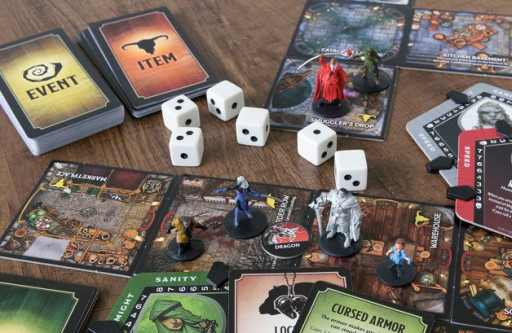
Experience twisted horrors in a familiar city.
Set in a place very much familiar with D&D fans, Betrayal at Baldur’s Gate takes the haunting tone of Betrayal At House on the Hill to the largest city on the Sword Coast: Baldur’s Gate. With eldritch monsters having suddenly appeared, players must work together to restore peace –or die trying.
If you’ve ever played any Betrayal game before, you’ll know that the appeal is the exploration and cooperative mechanic of the game. Players will start on a default location and slowly build out the world by placing tiles on the table, all the while amassing various items, buffs, and encounters. Then comes the reveal: at a certain point, you roll to determine who among you has been a traitor all along.
Admittedly, some of the original Betrayal’s horror focus has been exchanged for Dungeons and Dragons’ more fantastical elements. So while the Baldur’s Gate edition may not give night terrors, it’s a great tabletop game if you just want a quick D&D fix and a couple of twists along the way.
Choose this game if you like:
- Cooperative games: Before the traitor reveal, you’ll work with your fellow players to map out Baldur’s Gate through the various location tiles available to play. You’ll encounter loot, unique events, and even stat checks like a miniaturized D&D campaign.
- Twist and Turns: The game picks up exponentially once the “haunt” is triggered. Here, one of you is revealed to be a traitor all along and is given new rules to thwart the rest of the party. This is where most of the items you accumulated come into play as well as opening up combat sequences.
- Mini D&D-themed adventures: Being based on Dungeons and Dragons itself, you’ll encounter many references that made the source material a hit. Creatures like the iconic mindflayers will make an appearance alongside fan-favorite items such as the Deck of Many Things. It’s great for veterans who want a twist to their campaigns or newcomers curious about what D&D is about.
- Ever-changing maps and builds: Due to the inherent nature of the game, the layout of your map will always change as well as the items you collect. While this makes it difficult to optimize builds, it's great if you want variety and randomness to your game.
3. Dread
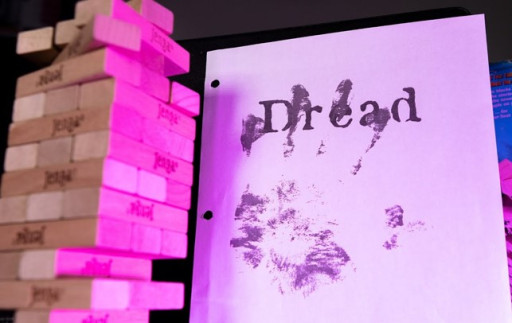
Replace dice with a tower to build real-world suspense.
From the publisher that brought you the Tower system, Dread does away from the d20 dice rolls and replaces them with a Jenga tower. Every time a character does an action like fighting or sneaking, they pull a block–whether this action succeeds or not is entirely dependent if the tower remains standing.
It may seem easy when starting, but as the campaign continues, the tower becomes more and more unstable. This leads to the defining mechanic of Dread: the building of tension. There’s no lucky roll, no modifiers, no abilities–just you and a steady hand, putting you in the same suspense as your characters.
As you may have noticed, Dread works best with survival stories rather than ones where you’re expected to fight back. While combat isn’t where Dread shines, it excels in roleplaying. With no reasonable way to retaliate, you’ll have to rely on your character’s motivations, personality, strengths, and limits to navigate through your DM’s world.
Choose this game if you like:
- Horror-based narratives: Dread is originally meant to be played with horror in mind. While many campaigns have certainly experimented with other genres, the tense, survival-focused narratives in horror make Dread shine the most.
- Real life player engagement: With the Tower system, there are no external factors that pull you away from the game. You determine your character’s fate–not dice rolls, not passives, not skills. This addition of personal stakes is what made the system popular in personality-driven games like the recent Starcrossed.
- One-shot campaigns: Like the emotion it's named after, Dread is most heart-clenching if not drawn out, with four hours being the most cited runtime in the guidebook. Typically, this is to keep the tension similar to how horror shows don’t overstay their welcome–but hey, if you find a good DM (or you are one), the system still works for long campaigns.
2. Cairn
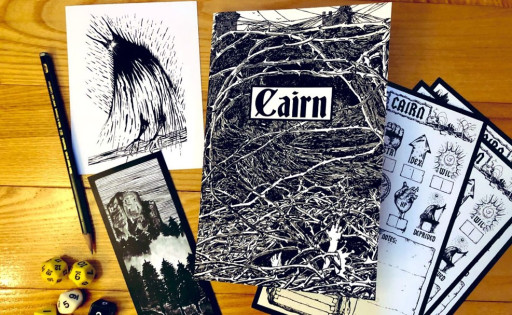
Return to the grittier, more deadly style of old school tabletop gaming.
With Cairn, you learn and play in under 15 minutes. It may seem like an impossibility for the heavy tabletop players, but Cairn delivers. By taking cues from older iterations of tabletop games–like the fluidity of Into the Odd and equipment system of Knave–it has made a hybrid system that lets you kick off into a game straight away. And the best part? It can be downloaded for free!
However, don’t mistake simplicity for the lack of substance. The game’s mechanics run deep and encourage tactics rather than brute force. Attacks always hit, and your HP is constantly at risk of dropping. This isn’t always a bad thing. Survive a near-death encounter and you gain Scars, permanently altering a character both stat- and feature-wise.
Ultimately, Cairn is for those who want a streamlined experience. Even traditional classes have been reworked, making your role dependent on your equipment instead. If you prefer the classic D&D feel, however, the game’s openness has given birth to a large community with tons of campaigns, homebrew content, and additional rules that echoes other tabletops.
Choose this game if you like:
- OSR-style games: Cairn takes many cues from Old School Renaissance (OSR) games. Unlike more modern experiences, OSR focuses on deadly combat that challenges the player rather than the character. With fewer rules, it also encourages spontaneous rulings from your DM instead of going back into the many limitations of modern rulebooks.
- Easy to run, hard to master system: The depth of Cairn reveals itself as you get familiar with the mechanics. The slot-based inventory will have you juggle between spellcasting and equipment while the Scar system offers the choice between playing safe or getting better stats.
- Large community of compatible campaigns: Unlike most rulebooks, Cairn doesn’t have built-in campaigns. For all intents and purposes, it truly just contains the rules on how to run the system. Instead, the game’s community is what supplies the adventures, with currently hundreds of available options to try right now. There are even instructions to convert other campaigns into Cairn’s system.
- Well-informed decision making: Some games are all about the mystery, hiding crucial information as a core element in the gameplay. In Cairn, however, players are given the details so they focus on decision-making rather than discovery. This weighs you with personal accountability rather than blaming factors you weren’t told in retrospect.
- Gritty, dark fantasy themes: While many great campaigns have certainly been developed without this theme, Cairn, by default, is medieval dark fantasy. Personally, this emphasizes the game’s brutality the best, with death looming constantly around your characters and every encounter a risk to your life.
1. Pathfinder 2E
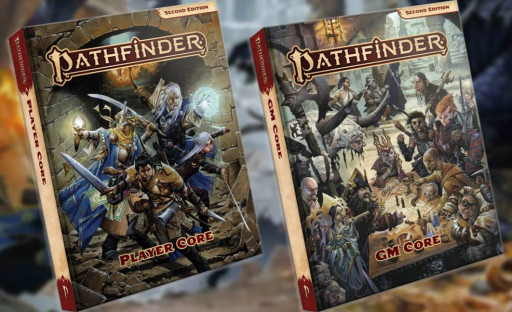
A rules-heavy game that captures the D&D feel but with its own unique twists.
Pathfinder remains our first choice for games similar to D&D. After all, it began as an offshoot of D&D’s 3.5 Edition ruleset before coming to its own identity. Now with its 2nd Edition (2E), the game has polished most of the rough edges of its initial release.
Like D&D, Pathfinder is a rules-heavy RPG to make it feel more like a game rather than a storytelling device. That’s not to say you can’t create epic adventures. With its Tolkien-esque universe, filled with your traditional fantasy folk, there’s plenty of room to make your campaigns as rich and lore-heavy as you like.
So, why choose Pathfinder over Dungeons and Dragons? For one, it’s great for tabletop veterans who just want to branch out to a new system. At its core, however, is its customizability. From its character creation to turn actions, Pathfinder adds a layer of flexibility that, while possibly overwhelming, offers far more freedom than what D&D provides.
Choose this game if you like:
- Character building: Pathfinder, especially 2E, allows for a more modular character customization than its Dungeons and Dragons counterpart. With Feats replacing traditional multiclassing, you can add abilities that better fit your character far better than the rigid approach of D&D.
- High-fantasy settings: Of course, being modeled after D&D, Pathfinder shares a heavy focus on all things fantastical. This isn’t necessarily a bad thing; while you’ll see similar tropes, the games add their own twists to them to stand out from one another. Plus, Pathfinder is great if you just want to experience another system but in a different fantasy world.
- Nuanced skill systems: In D&D, you’re either proficient in a skill or not. Pathfinder adds a layer of refinement to that where your characters grow from Trained, Master, Expert, and Legendary. This scale creates a feeling of growth, that you actually earn the bonuses you get from becoming better at a certain skill.
- A tighter combat system: One of Pathfinder 2E’s biggest changes from other tabletop roleplaying games is in its combat. No more mulling over what constitutes as a bonus action, an additional attack, or any of the like. Your character gets three actions per turn–that’s it. Whether this is walking towards an enemy, swinging a sword, or casting a spell, you’ll have to think carefully to make your limited moves count.
- Collecting and optimizing weapons: Weapon choice is as critical in Pathfinder 2E as your own character. With almost all items having distinct stats for damage, weight, and type, you can build up characters to maximize the output of their chosen weapon.
Want to explore different genres of tabletop gaming? Try out our recommendations below:
